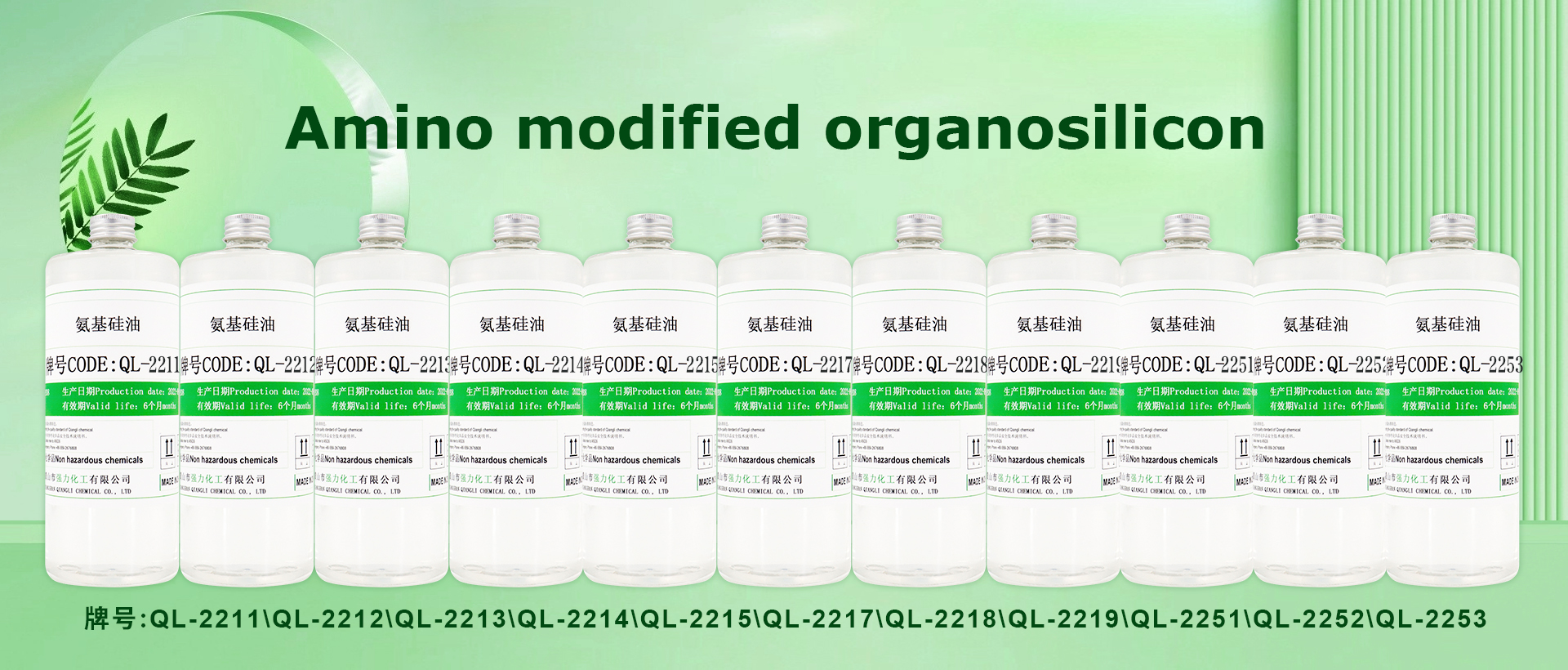The application of amino silicone oil on aramid fibers (such as Kevlar) is mainly to improve their surface properties (such as lubricity, softness, antistatic property, etc.) without damaging the core characteristics of aramid, such as high strength and high temperature resistance. The following are the formula design principles, typical process steps and precautions for aramid fiber treatment with amino silicone oil, for reference:
I. Core Principles of Formula Design
-
Selection of Amino Silicone Oil
- Priority is given to low-yellowing amino silicone oil (such as polyether-modified amino silicone oil, tertiary amine-type amino silicone oil) to avoid discoloration of aramid after high-temperature treatment (aramid has good temperature resistance but is susceptible to oxidation by amine substances).
- The amino content is moderate (usually 0.2-0.6 mmol/g): too high may cause the fiber to become stiff, while too low may result in insufficient softness.
- Molecular weight matching: medium molecular weight (about 10,000-30,000) is more likely to form a uniform film on the aramid surface, taking into account both lubrication and adhesion.
-
Auxiliary Components
- Emulsifier: Non-ionic emulsifiers (such as fatty alcohol polyoxyethylene ether, Span-Tween compound) are selected to avoid residual ionic emulsifiers affecting the electrical properties or chemical resistance of aramid.
- pH regulator: Adjust the pH of the treatment solution to 5-6 with acetic acid or citric acid (weak acidity can promote the hydrolysis and adsorption of amino silicone oil).
- Antistatic agent (optional): If it is necessary to improve the antistatic property, a small amount of polyether antistatic agent (with good compatibility with amino silicone oil) can be compounded.
- Water: Deionized water (to avoid impurities affecting the treatment effect).
II. Typical Formula Example (based on 100g treatment solution)
| Component | Dosage (g) | Function |
|---|---|---|
| Low-yellowing amino silicone oil | 2-5 | Provide softness and lubricity |
| Non-ionic emulsifier | 0.5-1.5 | Emulsify silicone oil and stabilize dispersion |
| Acetic acid (10% solution) | 0.1-0.3 | Adjust pH to 5-6 |
| Deionized water | Balance | Dilute and control concentration |
| (Optional) Polyether antistatic agent | 0.3-0.8 | Improve antistatic performance |
III. Treatment Process Steps
1. Pretreatment (Key)
-
The surface of aramid fiber is smooth and inert, so it is necessary to first remove surface oil or impurities:
- Soak in 50-60℃ deionized water for 10-15 minutes, and stir gently;
- (Optional) If there is more oil, add 0.1-0.3% neutral detergent (such as sodium dodecyl sulfate), ultrasonically clean for 5 minutes, and then rinse with deionized water until neutral.
2. Preparation of Amino Silicone Oil Treatment Solution
- Mix amino silicone oil with emulsifier and stir for 5 minutes (rotating speed 300-500rpm);
- Slowly add deionized water (about 1/3 of the total water volume), emulsify at high speed (800-1000rpm) for 10-15 minutes to form a uniform emulsion;
- Add the remaining water, stir evenly, and adjust the pH to 5-6 with acetic acid for later use.
3. Dipping/Spraying Treatment
-
Dipping method (suitable for loose fibers or fabrics):
- Completely immerse the pretreated aramid fibers in the treatment solution with a bath ratio of 1:10-1:20 (fiber: treatment solution);
- Soak at room temperature for 10-20 minutes, and stir gently during the period to ensure full contact between the fibers and the treatment solution.
-
Spraying method (suitable for fabrics or molded products):
- Uniformly spray the treatment solution on the aramid surface, and control the spraying amount (the weight gain rate of the fiber is preferably 3-8%; excessive weight gain may easily cause adhesion).
4. Drying and Curing
- First pre-dry at 80-100℃ for 10-15 minutes to remove surface moisture;
- Then raise the temperature to 120-150℃ and bake for 20-30 minutes (the curing temperature should be adjusted according to the type of amino silicone oil, avoiding exceeding the temperature resistance limit of aramid; aramid can withstand high temperature in the short term up to 200℃ or more, and it is recommended to be ≤180℃ for long-term use);
- After natural cooling, it can be processed subsequently (such as spinning, weaving).
IV. Precautions
- Concentration Control: The amount of amino silicone oil should not be too high (if the concentration in the treatment solution is >5%, it may cause fiber adhesion and affect the hand feel).
- Temperature Control: The curing temperature should be lower than the thermal aging temperature of aramid (the temperature resistance of different types of aramid varies; it is recommended to verify with small-scale tests first).
- Uniformity: The treatment solution must be fully emulsified (no stratification) to ensure a uniform silicone oil film on the fiber surface and avoid uneven performance caused by local excess.
- Post-treatment Evaluation: After treatment, test the breaking strength of the fiber (should retain more than 90%), softness (hand feel evaluation), antistatic property (surface resistance test), etc., and adjust the formula according to the results.
Through the above formulas and processes, the processability and usability of aramid can be effectively improved without damaging its core performance. In practical applications, adjustments should be made according to the specific aramid type (such as para-aramid, meta-aramid) and performance requirements (such as focusing on softness or antistatic property), and it is recommended to verify the effect with small-batch tests first.




